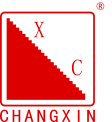Two recycling methods for waste magnesia carbon bricks
Waste magnesium carbon brick refractory materials regeneration brick-making technology Iron and steel production needs to consume a large number of magnesium-carbon bricks, for the regeneration of magnesium-carbon refractory materials after use provides an outlet, so the regeneration of magnesium-carbon refractory materials after use of the brick technology has become the focus of the development of …
Two recycling methods for waste magnesia carbon bricks Read More »
